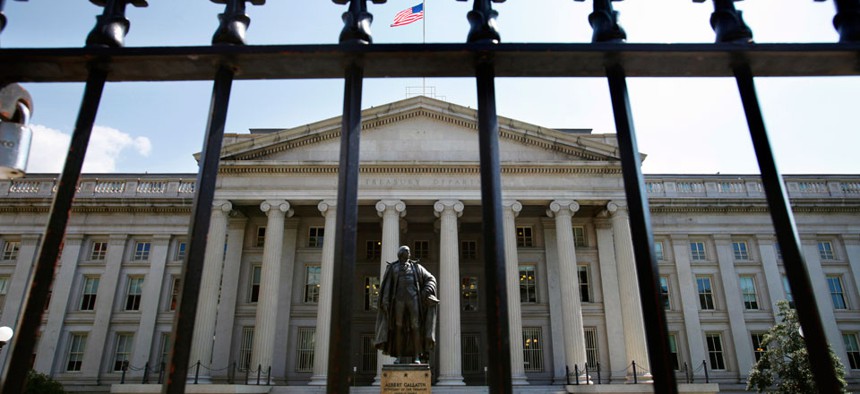Nearly Every Major Agency Has Reduced Furloughs
Most federal employees have not experienced as many days of unpaid leave as originally forecast.
This story has been updated.
When sequestration was about to kick in, the Obama administration began a nearly across-the-board campaign to discuss the devastating impact the automatic cuts would have on agency operations.
At the center of these warnings stood employee furloughs: mandatory unpaid leave to help each department meet the lower budget caps that took effect March 1. Furloughs, combined with hiring freezes, would disrupt the proper functioning of government, agency chiefs said, as fewer employees working fewer hours could not accomplish the same amount as a fully staffed workforce.
While many federal agencies have in fact moved forward with furloughs, and there remain countless examples of sequestration interfering with government operations, most major departments have reduced furlough days, or eliminated them altogether.
The earliest examples came from departments that told Congress they would have to furlough employees, but ended up backtracking. The Education and Justice departments fall into this category. The Agriculture, Transportation and Homeland Security departments all received authority to transfer funds between agency accounts, and were therefore able to cancel planned furloughs. The Commerce Department projected furloughs at its National Oceanic and Atmospheric Administration, only to cancel them in May.
The most significant example of furlough reductions has been the Defense Department. The Pentagon originally planned to furlough all 750,000 of its civilian employees for 22 days. It then used reprogramming to trim that number to 11 days, and more recently -- through a series of cost-cutting measures and inter-service transfer of funds -- reduced the days of unpaid leave to six. The furloughs are now estimated to affect about 650,000 Defense civilians.
Several agencies have relied on “internal reviews” of their financial conditions, during which they discovered cost-cutting measures had made their situations less dire than originally anticipated. This, in turn, allowed them to cut required furlough days.
The Treasury Department, for example, originally said it would furlough all 90,000 of its Internal Revenue Service employees five days, but has since cut the number of days to three. The Housing and Urban Development Department also recently canceled two furlough days. In May, the Environmental Protection Agency cut furloughs by three days. The Interior Department warned of 12-14 furlough days for the U.S. Park Police, but ultimately ended the furloughs after employees had taken less than half of the expected total.
The Labor Department sent out furloughs notices --with varying lengths of unpaid leave -- to 4,700 employees. The agency called the situation “fluid” and hoped to cancel furloughs, and Government Executive has confirmed several of Labor’s sub-agencies have reduced required furlough hours.
Some agencies consistently left the door open for furloughs, but with only about 45 days left in the fiscal year, employees appear to be safe.
The Health and Human Services Department repeatedly said it was continuing to “evaluate the situation” and “had not made any specific decisions” about implementing furloughs, but has not required its employees to take unpaid leave.
One of the few major agencies that stuck to its furlough prognosis appears to be the Office of Management and Budget, which scheduled 10 days of unpaid leave and has not announced any change of plans. OMB did not respond to multiple requests for an update on its furlough situation.
The American Federation of Government Employees attributes the furlough reductions and cancellations partly to the success of its negotiations.
“We showed the agencies there were numerous alternatives to dealing with sequestration,” said Jacqueline Simon, public policy director at AFGE. “It was across the board and our union responded in every one of these situations.”
Simon added the bloated estimates were a “political calculation,” with federal employees dangled as sacrificial lambs to demonstrate to Congress the potential fallout from sequestration.
“The administration wrongfully assumed Congress would act,” Simon said. “Congress didn’t act. They didn’t care.”
Sen. Tom Coburn, R-Okla., ranking member of the committee that oversees the federal workforce, agreed with the notion that the White House was politically motivated in its early warnings.
“The administration previewed a parade of horribles that hasn’t happened,” said Coburn spokesman John Hart. “We’ve also seen that where there is flexibility there is fat. In other words, [agencies’] ability to be flexible demonstrates that there is plenty of waste and fat in the budget that can be cut before cutting vital services or furloughing employees.”
NEXT STORY: Pentagon Cracks Down on Performance Awards








